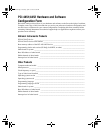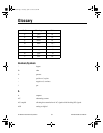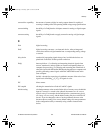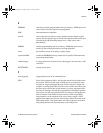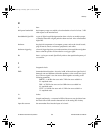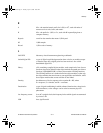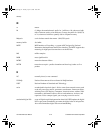
Glossary
©
National Instruments Corporation G-7 PCI-4451/4452 User Manual
E
EEPROM electrically erasable programmable read-only memory—ROM that can be
erased with an electrical signal and reprogrammed
EMC electromechanical compliance
encoder a device that converts linear or rotary displacement into digital or pulse
signals. The most popular type of encoder is the optical encoder, which uses
a rotating disk with alternating opaque areas, a light source, and a
photodetector.
EPROM erasable programmable read-only memory—ROM that can be erased
(usually by ultraviolet light exposure) and reprogrammed
event the condition or state of an analog or digital signal
expansion ROM an onboard EEPROM that may contain device-specific initialization and
system boot functionality
external trigger a voltage pulse from an external source that triggers an event such as A/D
conversion
EXTSTROBE* external strobe signal
F
false triggering triggering that occurs at an unintended time
FIFO first-in first-out memory buffer—the first data stored is the first data sent to
the acceptor. FIFOs are often used on DAQ devices to temporarily store
incoming or outgoing data until that data can be retrieved or output. For
example, an analog input FIFO stores the results of A/D conversions until
the data can be retrieved into system memory, a process that requires the
servicing of interrupts and often the programming of the DMA controller.
This process can take several milliseconds in some cases. During this time,
data accumulates in the FIFO for future retrieval. With a larger FIFO,
longer latencies can be tolerated. In the case of analog output, a FIFO
permits faster update rates, because the waveform data can be stored on the
FIFO ahead of time. This again reduces the effect of latencies associated
with getting the data from system memory to the DAQ device.
User.book Page 7 Tuesday, April 14, 1998 10:20 AM



